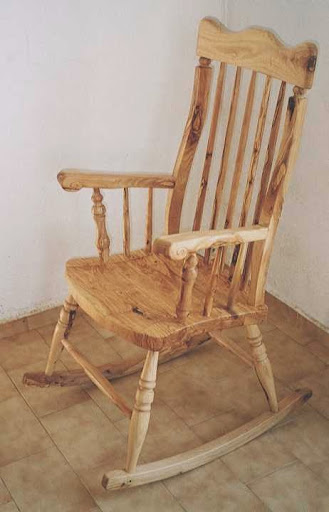Holly is the traditional wood used for the "whips" used in the world of harness horses except when they're driven from the ground. It's an extremely strong and pliable, springy wood when well seasoned and cut at the correct time of year for this purpose. It was always used bark-on.
You'd look for straight-ish growth of about seven years of age, and the ideal would be 3/5ths of an inch diameter at the thick end of a four foot length tapering to 3/10ths of an inch at the other end; sticks would be cut over length and hung for two years or more by the thin end with as much as twenty pounds of weight attached to the other end, and the weight over that length of time seasoning would produce a stick which was perfectly straight and perfectly stable; it would break before taking a deformation. Much sought after are rabbit-bitten sticks and deer-bitten in the larger sizes, the scars from these wounds are extremely attractive on the seasoned bark. But the most sought-after of all are the "dog-legs" where the stick has a crank half way along it's length of no more than it's own width, and both halfs perfectly straight in themselves and in relation to each other. I've seen perfect examples of such stick blanks sell for very large sums of money.
After the straightening/seasoning the blannks would have a handle attached by various means, the stick would be stained/dyed/coloured and oiled and would then have the thong attached by butt-jointing to the tip, covered by a length of split goose quill glued in place with "scotch glue", and then a whipping twine applied about two or three inches either side of the exact spot where the leather thong abutted the stick tip; this place would be precisely marked by a very small knot in the whipping twine so it could be easily found. You'll see why really good hand-made Driving Whips can and do fetch huge sums of money, but the really good ones rarely come onto the market.
You'd look for straight-ish growth of about seven years of age, and the ideal would be 3/5ths of an inch diameter at the thick end of a four foot length tapering to 3/10ths of an inch at the other end; sticks would be cut over length and hung for two years or more by the thin end with as much as twenty pounds of weight attached to the other end, and the weight over that length of time seasoning would produce a stick which was perfectly straight and perfectly stable; it would break before taking a deformation. Much sought after are rabbit-bitten sticks and deer-bitten in the larger sizes, the scars from these wounds are extremely attractive on the seasoned bark. But the most sought-after of all are the "dog-legs" where the stick has a crank half way along it's length of no more than it's own width, and both halfs perfectly straight in themselves and in relation to each other. I've seen perfect examples of such stick blanks sell for very large sums of money.
After the straightening/seasoning the blannks would have a handle attached by various means, the stick would be stained/dyed/coloured and oiled and would then have the thong attached by butt-jointing to the tip, covered by a length of split goose quill glued in place with "scotch glue", and then a whipping twine applied about two or three inches either side of the exact spot where the leather thong abutted the stick tip; this place would be precisely marked by a very small knot in the whipping twine so it could be easily found. You'll see why really good hand-made Driving Whips can and do fetch huge sums of money, but the really good ones rarely come onto the market.

